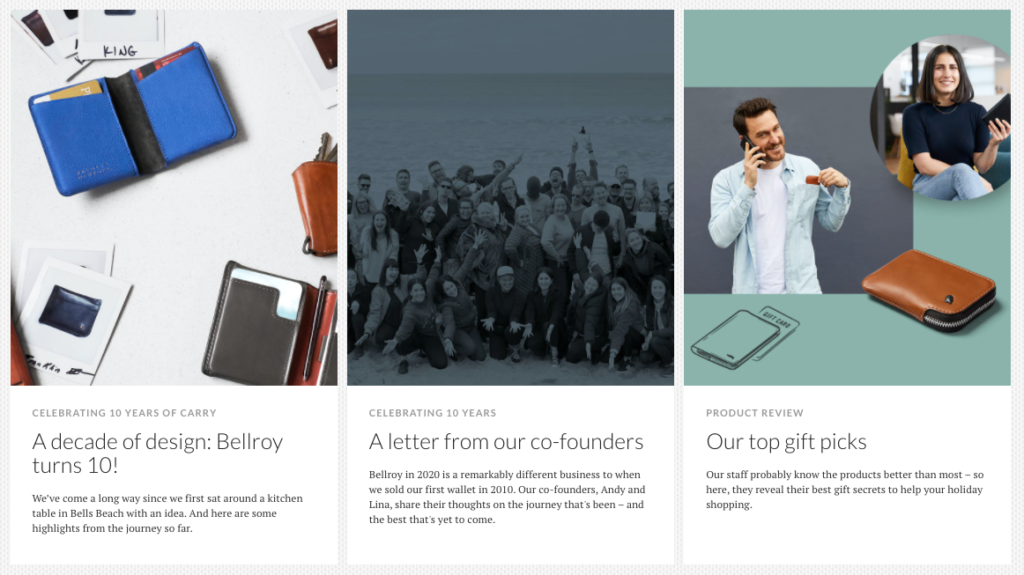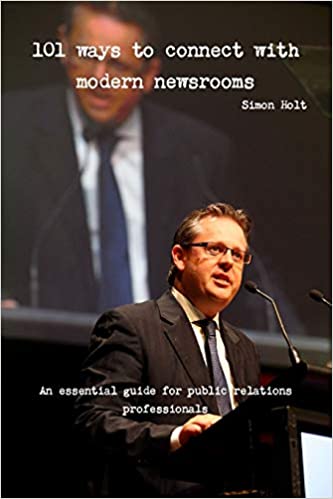There’s little doubt that strategic PR and communications plays a key role in the success of any business or nonprofit organisation today.
And more and more, it’s becoming increasingly obvious that credible content, in its many and varied formats, is central to the success of any PR program.
I like to say that PR and content are a match made in communications heaven. Here are five reasons why:
(1) The way we get our news and information has changed irrevocably
People today get their news and information from many and varied sources over and above the traditional media outlets they may have relied upon in the past. These sources can often include companies and organisations themselves, but only if they’ve earned the right to become a trusted source of information.
This takes time, effort and a commitment to producing seriously good content on an ongoing basis. A good example of this is the electrical engineering marketplace Arrow Electronics, which has created an information-rich content hub.
Ditto King Arthur Baking Co, Bellroy, Farrow & Ball, and Bed Threads.
THE OPPORTUNITY: The core opportunity here is for an organisation to become its own credible media channel. As such, it would produce and distribute genuine stories, feature pieces and interesting micro-content for social media that not only finds an audience but builds trust and credibility with an audience over time.

This option makes a lot of sense when you realise that constant interruptions with a barrage of one-way promotional messaging is becoming less and less effective as people become more adept at ignoring or blocking unwanted advertising noise.
(2) Trust matters
For years, the Edelman Trust Barometer has shown that among the most trusted sources of information for a company or organisation are its internal subject matter experts, along with independent third-party experts, such as academics. On the flip side, CEOs have not fared nearly so well as trusted sources in recent years.
THE OPPORTUNITY: The core opportunity here is for businesses and organisations to leverage the power of their experts to inform and educate the community through content that’s useful, helpful, thoughtful and relevant.
A content-first approach can also be a powerful way to boost the public profile and credibility of C-suite executives, including the CEO. But this can work only if a CEO speaks in a way that’s open and authentic. The world does not need another blog post that is nothing more than an over-edited press release full of jargon and generalities!
(3) We live in an opt-in world
People increasingly are opting in to receive news and information that’s of particular interest and relevance to them, and screening out the rest of the noise.
THE OPPORTUNITY: The core opportunity for businesses and organisations is to establish mechanisms online that make it easy for people to follow your brand and access your content by whatever means suits them. This could take the form of an opt-in email subscriber list, segmented RSS feeds as well as up-to-date social channels.
(4) People want to go behind the public persona
We often forget consumers are human beings with curiosity and a wish to connect on an emotional level. We have an innate desire to go behind the public face of an organisation, project or community endeavour and connect with interesting, authentic stories and the people behind them.
Unfortunately, too many organisations keep their experts and leaders hidden in the shadows of the boardroom, away from public view. The content they churn out tends to be soulless, overly varnished and ultimately provides little value to anyone.
THE OPPORTUNITY: The core opportunity here is for businesses and organisations to develop and nurture an open and transparent content-first culture. In this environment, leaders and employees understand the need for authentic storytelling and the positive effect it can have on their brand in the marketplace.
(5) Traditional media increasingly needs collaboration with content creators
The digital revolution has hit traditional media hard over the past decade. Severe cuts to once-robust newsrooms have resulted in fewer journalists available to cover more stories.
This lack of time and resources may mean in some circumstances that stories aren’t covered in as much depth as they once were, much to the chagrin of both the audience and journalists themselves.
THE OPPORTUNITY: The core opportunity here is to help supplement the media’s editorial output.
This can be done in a number of ways. For example, using (paid) native content, which still needs to be editorially robust as well as provide a stream of stories and ideas that have the potential to pique the imagination of print, online and broadcast journalists alike.
Collaborating with the media by contributing op-eds, for example, is all part of a content-led communications approach. It’s the same when it comes to producing industry research reports and sharing the findings with journalists.
This can also be said of creating collateral material such as charts, infographics and video. If these help journalists or editors improve the quality of stories, it becomes a win-win for all parties.
If nothing else, the content you produce helps journalists and producers more effectively determine your professional bona fides and the level of your knowledge and expertise before they decide to source a quote from or run an interview with you or someone from your organisation.

In his book for PR professionals, 101 Ways to Connect with Modern Newsrooms, Simon Holt, former editor-in-chief of The Brisbane Times, champions collaboration between PR pros and journalists:
“. . . There’s a window of opportunity for PR professionals who are willing to help,” he says. Pair company resources with a mainstream newsroom, and the game changes.
Holt gives the example of music festivals, which he says have successfully hosted pop-up newsrooms to cover their events live or have created apps and news streams in partnership with mainstream newsrooms.
So, as we can see, there is a significant case to mount for content to lead the PR and communications effort and, in doing so, help your brand become better known, liked and trusted; more front of mind with your clients and customers (and the people who influence them), as well as talked about in a positive way in the marketplace.



